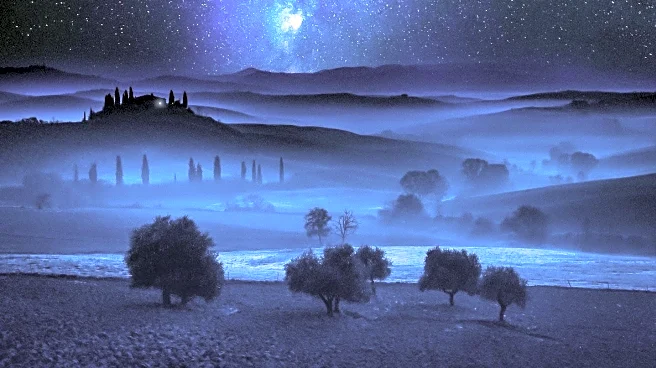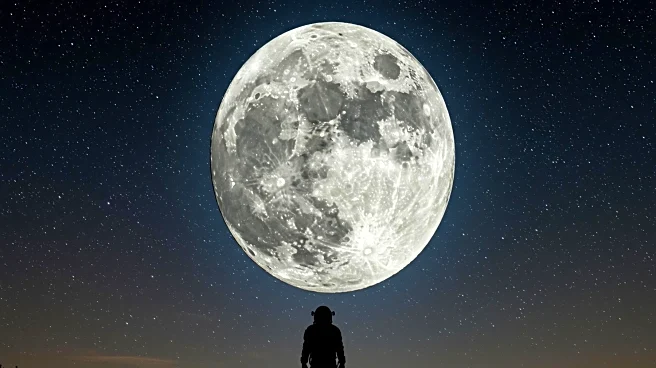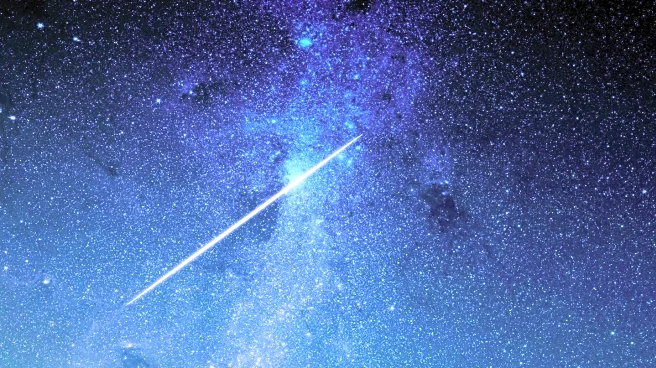Rapid Read • 7 min read
Tonight, a rare celestial event will occur as the Perseid meteor shower coincides with the northern lights, offering a spectacular display for stargazers. The Perseids, known for their bright fireballs, are caused by debris from Comet Swift-Tuttle burning up in Earth's atmosphere. NASA estimates that under ideal conditions, observers could see 40 to 50 meteors per hour, though the bright moon may reduce visibility. Concurrently, the northern lights, or aurora borealis, are expected to be visible in northern regions like Alaska and parts of Canada due to solar winds interacting with Earth's atmosphere. NOAA's Space Weather Prediction Center notes that while auroral activity is possible, the likelihood of a geomagnetic storm is decreasing.
AD
This event is significant for astronomy enthusiasts and photographers, providing a unique opportunity to witness two major celestial phenomena simultaneously. The Perseid meteor shower is one of the most anticipated annual events, drawing attention from both amateur and professional astronomers. The northern lights add an extra layer of excitement, as they are typically visible only in specific regions. This convergence highlights the dynamic nature of Earth's atmosphere and space weather, offering educational insights into astronomical events and their causes.
Following the Perseids, the next major meteor shower will be the Orionids, expected to peak between October 22 and 23. While less dramatic than the Perseids, the Orionids can still provide a stunning display, especially in areas with minimal light pollution. Stargazers are advised to plan for clear skies and dark locations to maximize viewing opportunities.
AD
More Stories You Might Enjoy











